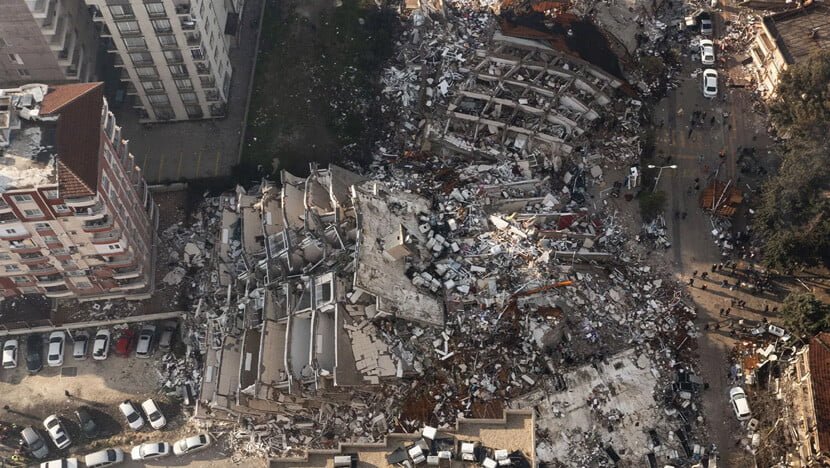Earthquakes are among the natural disasters that pose serious risks worldwide, threatening both people’s safety and material assets. In seismically active regions like Turkey, the importance of earthquake-resistant structures becomes even more critical. At Bayazıtoğlu, our mission is to contribute to public safety through the innovative solutions we provide in structural safety and seismic resilience. In this article, we will examine in detail the primary causes of building collapse during earthquakes, the measures that can be taken to reduce these risks, and Bayazıtoğlu’s expert approach in this field.
Causes of Building Collapse in Earthquakes
The causes behind building collapse during earthquakes generally stem from deficiencies in design, materials, and construction practices. Understanding these causes more thoroughly is a critical step toward preventing future disasters.
-
Use of Low-Quality Construction Materials
Structures that are not earthquake-resistant are often built with low-quality concrete, steel, or other structural elements. Materials that do not meet standards significantly weaken a building’s durability under seismic loads. For example, low-strength concrete or insufficient steel reinforcement can cause buildings to collapse during an earthquake.
-
Faulty Engineering Designs
Earthquake-resistant structures must be designed to absorb seismic loads. However, incorrect engineering calculations or design approaches unsuitable for seismic zones leave buildings vulnerable to earthquakes. For instance, failure to properly calculate load distribution or inadequately designed structural systems can increase the risk of collapse.
-
Insufficient Construction Supervision
A lack of proper oversight during construction allows non-compliant practices to go unnoticed. For example, improper curing of concrete or errors in reinforcement placement compromise structural safety. The absence of independent and specialized inspections creates serious long-term risks.
-
Unsuitable Soil Conditions
The geotechnical properties of the soil on which a building is constructed directly affect its behavior during an earthquake. Soils with liquefaction risk, clay-rich, or loose soils can amplify seismic waves, leading to structural damage. Buildings constructed without proper geotechnical surveys remain highly vulnerable to these risks.
-
Old and Unreinforced Structures
In older buildings, designs and materials often do not comply with current seismic codes. Unless these structures are retrofitted to meet modern seismic standards, they pose a high risk of collapse during an earthquake.
Preventive Measures
To minimize earthquake risks, a series of measures can be taken at both individual and institutional levels. At Bayazıtoğlu, we adopt a comprehensive approach to implementing these measures.
-
High-Quality and Earthquake-Resistant Materials
In construction projects, high-strength concrete, steel, and other building materials that comply with international standards must be used. By selecting only certified and tested materials in its supply chain, Bayazıtoğlu ensures the long-term reliability of its structures.
-
Design in Compliance with Seismic Engineering Standards
In earthquake-prone regions, engineering designs that take seismic loads into account are of critical importance. Bayazıtoğlu’s experienced engineering team develops innovative and resilient designs in accordance with the latest seismic regulations. These designs ensure that buildings demonstrate maximum resistance against seismic impacts.
-
Effective and Independent Construction Supervision
During the construction process, regular inspections by independent supervision teams prevent implementation errors. Bayazıtoğlu applies a rigorous supervision process in its projects, guaranteeing compliance with quality standards at every stage.
-
Comprehensive Soil Analysis and Geotechnical Studies
Before any structure is built, the geotechnical characteristics of the soil must be thoroughly analyzed. By collaborating with expert geotechnical engineers, Bayazıtoğlu provides foundation and design solutions tailored to the specific ground conditions. This is particularly vital in areas with a high risk of soil liquefaction.
-
Strengthening of Existing Structures
Older or earthquake-vulnerable buildings can be reinforced using modern retrofitting techniques. Bayazıtoğlu enhances the seismic resilience of existing structures through innovative methods such as carbon fiber reinforcement, steel bracing, and other advanced solutions.
-
Earthquake Insurance and Financial Security
Property owners should obtain comprehensive insurance policies to minimize financial losses against earthquake risks. This provides a critical safeguard for both individual and corporate property owners.
-
Emergency and Disaster Planning
Proper response during an earthquake plays a crucial role in preventing casualties. Bayazıtoğlu offers consultancy services for preparing emergency plans for building residents and managers. These plans include the designation of evacuation routes, training of emergency teams, and regular drills.
Bayazıtoğlu’s Commitment to Earthquake Safety
At Bayazıtoğlu, we continue to lead the sector in the construction of earthquake-resistant buildings and the retrofitting of existing structures. By adopting the highest standards in engineering, design, and implementation, we aim to contribute to the safety of society. Our projects fully comply with both local and international seismic regulations, integrating innovative technologies and sustainable solutions. In addition, we provide training and consultancy services to raise awareness on earthquake safety and help our clients make informed decisions.
Conclusion
Although earthquakes are inevitable natural events, proper planning, engineering, and implementation can significantly minimize potential damage. At Bayazıtoğlu, we are dedicated to building earthquake-resistant structures and upgrading existing ones to modern standards, working towards a safer future. Local building codes and seismic standards guide us throughout this process. By taking conscious and proactive steps against seismic risks, we can enhance the safety of both individuals and society as a whole.
If you would like to learn more about earthquake safety or seek professional support for your projects, you can get in touch with Bayazıtoğlu’s expert team. Together, we can build a safer and more resilient future.




